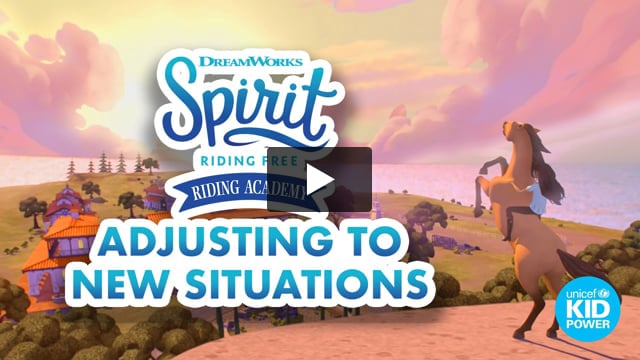Humans experience a range of emotions, from joy, excitement, gratitude, and contentedness to sadness, disappointment, frustration, nervousness, and anger. Feeling these emotions is healthy, but kids and teens don’t always know how to regulate emotions and express them in constructive ways.
At UNICEF Kid Power, one of our key priorities is destigmatizing social emotional and mental health by teaching kids that it is okay not to always feel okay. Through our Kid Power Up videos, we aim to model and help kids practice strategies to express their feelings in healthy ways. Destigmatization and effective management of emotions are big contributors to children’s social emotional well-being – and as you know, to an emotionally healthy environment in the classroom and at home.
You may be familiar with CASEL’s Framework, also called CASEL’s Wheel. A roadmap to social emotional competence, the CASEL Framework identifies Self-Management as the ability to manage one’s emotions, thoughts, and behaviors effectively in different situations and to achieve goals and aspirations. One of the ways CASEL recommends helping students practice self-management is through stress-management strategies.
Below is a list of our top 10 stress-management strategies for kids–many of which can also help teens–plus four of our favorite Kid Power Up videos demonstrating some of these strategies (and more). Consider practicing one of these exercises a day to build kids’ SEL “toolboxes” BEFORE big emotions hit. Start with…
- Breathing: Show kids how to calm their minds and slow their racing emotions through simple breathing techniques. Breathe in for three seconds, hold for three seconds, breathe out for three seconds, and then repeat until calm.
- Getting some fresh air: Speaking of breathing, a change of scenery and a breath of literal fresh air can help reset kids’ and teens’ minds, enabling them to think more clearly.
- Moving: Physical exercise is a great stress reducer. When you see a child’s emotions starting to build, suggest some jumping jacks or high knees…or get silly with some bird flaps, frog jumps or crab walks.
- Stretching: Simple stretches can also be a great way to relax the mind as well as the body. Start with a deep breath, and then have kids reach up to the sky and slowly bring their arms back down to their sides. Repeat a few times and add some gentle neck stretches and/or arm circles.
- Counting: Distraction is another effective stress management technique. Ask stressed kids to freeze in place and (silently) find 5 things they can see, 4 things they can touch, 3 things they can hear, 2 things they can smell and 1 thing they can taste.
- Talking: Talking about feelings is a healthy way to work through them. Encourage kids and adolescents to talk to friends, family members, or trusted teachers to share their feelings when they’re upset.
- Drawing: Kids and teenagers can also manage their stressful feelings through art. When they start to feel upset, encourage them to draw or paint their feelings with crayons, colored pencils, cool gel pens, watercolors, acrylics, and more.
- Writing: Kids may find journaling about their emotions productive at almost any age. You might have them start a “Big Feelings” journal where they can vent about their frustrations as well as track their happy times. If kids are not able to write words yet—no worries. Encourage them to draw their journal entries instead.
- Getting lost in music: Calm, quiet music can help calm and quiet kids (and adults), but letting kids and teens listen to their favorite tunes can also help bring them back to center. Consider building a stress song playlist for use a home or in the classroom!
- Cuddling: Snuggling with a parent or caregiver, favorite pet or stuffed animal is a great way to relieve stressful emotions.
And be sure to check out some of our favorite stress management videos – featuring some of your kids’ favorite characters and celebrities:
Adjusting to New Situations with Spirit Riding Free
Lucky, Pru, Abigail and Spirit help your kids practice deep breathing and other movements that may help them feel calmer when they’re nervous or anxious.
Name It to Tame It with LeVar Burton
LeVar teaches children to identify their emotions, calm themselves, and ask a grown-up for help when they need it.
Bayley models for children how to communicate their emotions more clearly and “read” other people’s feelings, too.
Change Happens with Sofia Carson
Sofia teaches kids to make a list of things they can and cannot control in stressful situations. You can even use a simple T-chart to further model this strategy for children.
For teens, take a closer look at the videos in our Yoga and Meditation and Dance categories within the UNICEF Kid Power platform. Many of these videos feature teens, young adults and music tracks that appeal to those ages.
That’s a lot of stress-management resources! Not only will these strategies help your kids (and teens) manage their current emotions in more productive ways, but they’ll also help kids build the tools and resilience they’ll need to successfully manage big feelings in the future.










